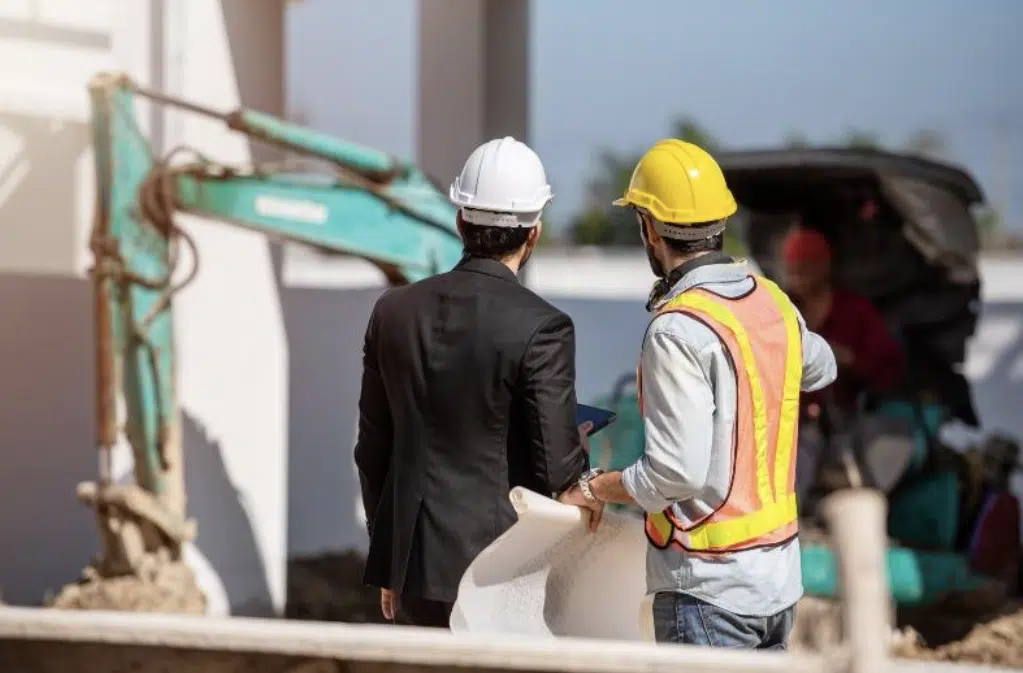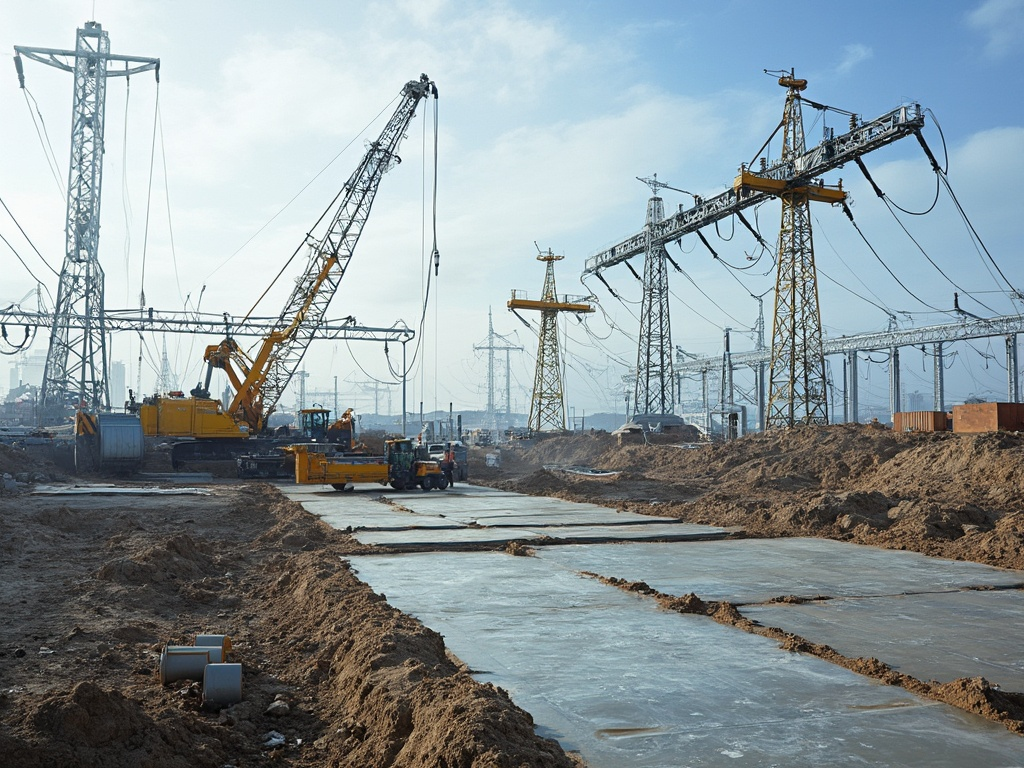What Are Composite Mats?
Key Features and Advantages
- Durability: Composite mats offer resilience against heavy machinery and wear and tear. The life expectancy of a composite mat is 10-20 years versus a laminated mat that will last 6 months to 2 years.
- Environmental Protection: These mats are ideal for minimizing environmental impact by protecting the ground underneath. Unlike wooden mats, composite mats are impermeable, which prevents the transfer of foreign materials between job sites, thereby minimizing or eliminating cross-contamination of soil, seeds, spores, fungi, and chemicals. In contrast, wooden mats absorb water and other materials, becoming heavier as a project progresses, which results in increased outbound trucking costs.
- Safety: Enhanced traction and stable surfaces reduce the risk of accidents on uneven or soft ground. The interlocking design creates a continuous work surface which reduces Total Recordable Incident Rates (TRIR) caused from workers tripping or falling caused from separated wood mats.
- Recyclability: Most composite mats are recyclable, aligning with sustainable construction practices. At the end of life, a composite mat can be ground up and remolded into a brand-new mat, giving another 10-20 years of useful life.
- Transportation: Composite mats offer a significant competitive edge compared to wooden mats, particularly in terms of weight. Each composite mat weighs approximately 1,000 lbs, allowing a standard truckload to cover 4,095 square feet. In contrast, a typical truckload of laminated mats only covers 1,920 square feet. As a result, trucking costs play a crucial role in the economic feasibility of projects that last less than six months, more so than any other factor.
Types of Projects That Need Composite Mats
Pipeline Construction
Pipeline construction involves the installation or maintenance of massive pipelines through diverse terrains, often requiring stable ground solutions to ensure smooth operations. Composite mats provide the necessary ground protection, mitigating risks associated with soil erosion, heavy machinery movement, and regulatory compliance.
Benefits in Pipeline Projects
- Load Distribution: Through their interlocking design, composite mats distribute the weight of heavy pipeline machinery, as the mats move as one fluid unit. This prevents ground damage caused by uneven load distribution typically seen with timber mats.
- Environmental Compliance: These mats help adhere to environmental regulations by protecting sensitive ecosystems.
- Enhanced Mobility: Construction vehicles can move efficiently without getting stuck, cutting down costly project delays.
Transmission & Distribution (T&D) Projects
Transmission and distribution projects often span long distances and varied environments. Composite mats offer a versatile and robust ground solution to safely navigate these challenging conditions.
Benefits in T&D Projects
- Surface Stability: Provides a stable working surface for cranes and other critical equipment.
- Optimal Pathways: Create temporary access roads quickly, improving logistics and efficiency.
- Weather Resistance: Composite mats perform well under adverse weather conditions, ensuring minimal project disruption.
Factors to Consider When Renting Composite Mats
1. Project Scope and Duration
Understanding the scale and timeframe of your project is crucial. For a short-term project, renting composite mats can offer significant cost savings without compromising on quality and performance.
2. Environmental Conditions
Assess the terrain and environmental conditions of your site. For muddy, wet, or uneven grounds, composite mats provide superior stability and protection compared to other materials.
3. Load Requirements
Identify the types of machinery and load requirements your project demands. Ensure that the composite mats you rent can support these loads to avoid equipment damage and operational delays.
4. Compliance and Safety Standards
Ensure the composite mats meet all safety and environmental compliance standards relevant to your area. Renting high-quality mats can help adhere to these regulations and avoid potential fines.
Why Rent Composite Mats?
1. Cost-Effective Solution
For many construction projects, renting composite mats is a more economical choice compared to purchasing. This is particularly true for short-term projects or those with fluctuating needs. Renting allows you to allocate resources more efficiently.
2. Flexibility
Renting composite mats offers greater flexibility as you can adjust the quantity and type of mats based on the changing requirements of your project. This adaptability ensures you always have the appropriate ground solutions when and where you need them.
3. Maintenance and Quality Assurance
When you rent composite mats from a reputable provider, you benefit from maintenance and quality assurance services. This ensures that the mats are in optimal condition, thereby minimizing the risk of project delays due to equipment failure.
4. Expert Support
Rental providers often offer expert support, assisting with the planning, construction mat installation and removal. This added layer of expertise ensures that the mats are utilized effectively, optimizing your project’s efficiency and safety.
Best Practices for Using Composite Mats in Construction
1. Site Assessment
A thorough site assessment is essential before the deployment of any matting project. This evaluation helps in identifying the specific needs and challenges of the site, enabling an informed decision on the type, quantity, and placement of mats.
Steps for Site Assessment:
- Survey the Terrain: Identify areas with soft soil, slopes, or challenging terrain that may require additional support or load-bearing capability.
- Categorize Ground Conditions: Classify sections of the site based on ground stability, moisture levels, and existing vegetation.
- Environmental Sensitivity: Highlight regions that need protection due to their environmental significance or compliance requirements.
- Traffic Analysis: Determine the paths for heavy machinery and vehicles to identify where mats are most needed. The best path on a project is not always a straight line.
2. Proper Installation
Proper installation is key to ensuring that composite mats deliver on their promises of durability and ground protection. Incorrect installation can lead to reduced effectiveness and even potential safety hazards.
Installation Guidelines:
- Plan the Layout: Use the site assessment data to plan the optimal layout of the mats, ensuring they cover all critical areas and avoid potential hazzards.
- Prepare the Ground: Clear the ground of debris, loose rocks, and excessive vegetation that may cause uneven surfaces.
- Align the Mats: It is always best to place mats in straight lines and overlap them slightly to prevent gaps. However, it is not always possible when avoiding trouble spots along a route. Align the mats according to the direction of traffic flow to improve load distribution.
- Secure the Mats: Depending on the conditions, always try to secure the mats using locking pins in as many pinhole locations as possible to prevent movement during use.
- Check Leveling: Ensure the mats are level and stable, adjusting as necessary to avoid creating tripping hazards or areas of instability.
3. Regular Monitoring
Continuous monitoring of composite mats throughout the project helps in identifying areas of ground movement that should be addressed. This proactive approach ensures that the mats remain effective and that the site remains safe.
Monitoring Practices:
- Daily Inspections: Perform daily visual inspections to check for any signs of damage, mat separation, or excessive movement.
- Load Monitoring: Ensure that the weight of the vehicles and machinery using the mats does not exceed their load-bearing capacity.
- Environmental Changes: Monitor for changes in environmental conditions, such as heavy rainfall or flooding, that may impact the performance of the mats.
- Record Keeping: Maintain a log of inspections and any maintenance performed. This documentation can help in analyzing movement patterns and improving future installations.
4. Efficient Removal
Proper removal of composite mats is as important as their installation. Efficient removal practices ensure that the mats can be reused and that the underlying ground remains protected.
Removal Procedures:
- Gradual Extraction: Remove the mats one at a time, starting from the area with the least traffic or the farthest distance from the exit point.
- Clean Before Storage: Clean the mats to remove mud, debris, and contaminants before storing them. This prevents cross-contamination of foreign materials, helps reduce damage during transit, and maintains their integrity for future use.
- Inspect for Damage: Inspect each mat for any signs of damage that occurred during use. This can help in determining if repairs are necessary or if specific mats need to be replaced.
- Environment Rehabilitation: If necessary, restore the environment to its original state by reseeding grass or performing other rehabilitation activities.
5. Maintenance and Repairs
Regular maintenance and timely repairs of composite mats extend their lifespan and ensure they remain effective.
Maintenance Tips:
- Routine Cleaning: Regularly clean the mats to prevent a build-up of mud and debris that can cause slipping, uneven surfaces, or the ability to pin them together.
- Repair: Repairs can be made by a qualified technician either in the storage yard or in the field. Contact your composite mat rental provider for further details.
- Rotate Use: Rotate the use of mats to ensure even wear and prolong their service life.
6. Training and Safety
Training your team on the proper use and handling of composite mats is crucial for safety and efficiency.
Training Steps:
- Usage Instructions: Provide detailed instructions on the correct placement, securing, and removal of mats.
- Safety Protocols: Train the team on safety protocols related to handling heavy machinery on composite mats, including load limits and emergency procedures.
- Regular Updates: Keep the team updated with any new guidelines or best practices related to composite mat usage.
7. Leveraging Expert Support
Lastly, always consider the support of your rental provider. Rental companies often have extensive experience and can offer valuable insights into maximizing the effectiveness of composite mats.
Utilizing Support:
- Pre-Project Consultation: Engage with your rental provider before the project to discuss specific needs and challenges.
- On-Site Assistance: Utilize any on-site assistance services they offer to ensure proper installation and handling.
- Post-Project Review: Conduct a post-project review with the rental provider to assess the performance of the mats and identify any areas for improvement.
Conclusion
Composite mats offer durability, environmental benefits, and the ability to ensure site safety and efficiency making them a preferred choice for rental customers.
When you rent composite mats, you gain access to high-quality, flexible, and cost-effective solutions tailored to your specific project needs. By following best practices and leveraging the support of experienced rental providers, you can enhance your construction operations and achieve more sustainable results.
Explore the Benefits of Composite Mats for Your Next Project
If you’re ready to optimize your construction site with reliable and efficient ground protection, consider renting composite mats for your upcoming pipeline or T&D projects. Contact us today to learn more about our rental solutions and how they can benefit your operations.




